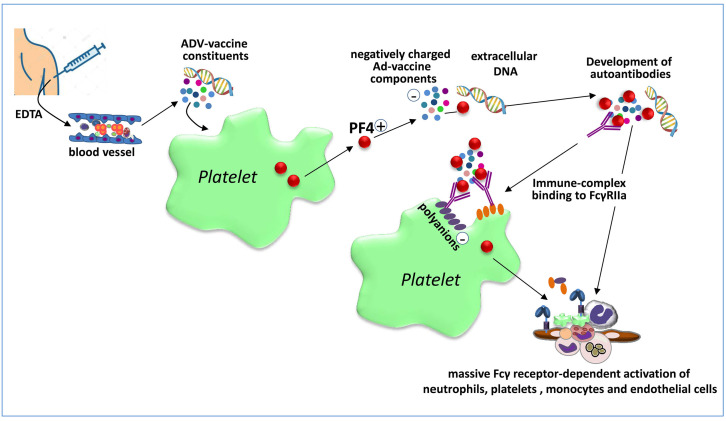Figure 2.
The autoimmune heparin-induced thrombocytopenia hypothesis. Vaccine components leaking into the bloodstream from the vaccination site (facilitated by ethylenediaminetetraacetic acid present in the vaccine) activate platelets to release platelet factor 4 (PF4). Vaccine constituents, likely polyanions or viral DNA, form complexes with positively-charged PF4 which are recognized as neoantigens by B cells that then produce antibodies against these complexes. The resulting immune complexes activate platelets through FcgRIIa, triggering the release of additional PF4 and polyphosphates thereby initiating a positive feedback loop that leads to further platelet activation and consumption. Extracellular DNA in neutrophil extracellular traps binds PF4 and the resulting DNA/PF4 complexes further recruit anti-PF4 antibodies inducing massive Fcg receptor-dependent activation of neutrophils, platelets, monocytes and endothelial cells leading to massive activation of coagulation and thrombosis. EDTA: ethylenediaminetetraacetic acid.

